
Filling out new patient forms
Every person with a chronic medical condition, like lupus, has done this time after time. Each time we face the adventure of seeing a new doctor or medical provider, we do it all over again. I cannot help but wonder what it would be like to fill out forms for a new doctor, if only. If only I were a normal person, without lupus! Perhaps that would be the ideal new patient experience. But then, perhaps I wouldn’t be needing to do it at all.
Follow along with me as I wish I could just fill out the form for my healthier alter-ego twin sister.
If it were my healthier twin…

Returning empty-handed
First, IF I were my healthier twin, it might be possible I have been to this doctor before. It has been such a long time, I can’t remember when or if it was, and so I ask the receptionist. “I think I have seen this doctor, can you remember when I was here last?” If I did, the year escapes me! I insist, “I really think I have been here before,” but because I have been away and healthy so long, the receptionist hands me a clipboard. She asks, “since this IS your first visit, would you please fill out all the forms, please, and bring them back when you finish?” My healthier self continues to protest, ” I think I saw Dr. Smith a long time ago,” so, she relents, and heads off to search her files for my chart.
While I stand there, holding the clip board and waiting, I contemplate that it has been so long ago, the young receptionist was probably in kindergarten, she couldn’t possibly remember me. Reason whispers in my ear, “any old records the doctor had about me were probably destroyed long ago.” Returning empty-handed, she announces politely, “IF you had a chart, we cannot find it, SO, we really do need you to humor us and fill out all the forms all over again. We will have to make you a new chart.”
Nope, it’s really me after all…
Now, since I am ME and not my mythical healthier counterpart, I really AM a new patient. However, I notice she already has a large file on me in her hands, brand spanking new, presumably holding unread fresh photocopies of medical records and diagnostic reports sent over from all my other doctors, labs and radiologists. Although she surely has my complete medical history in the shiny new file, she STILL insists, “please fill out all the forms.”
So, still holding the clipboard and pen in my hands, I sit down to begin working on the first question, “Describe briefly your present symptoms.”
Symptoms

Describe your symptoms…
IF I were my healthy twin, I would fill in something like, “sore throat.” But, since I am ME, and not healthier HER, instead, I panic! There are only five lines to write the answer on. How small can I print to get the most important things in that space? What should I leave out, what should I include? Should I limit my answer to just the issues related to this doctor’s specialty, or should I go for the grossly “TMI – too much information” answer? Should I list the diagnostic criteria, or just try to sound like a novice patient and graphically describe what each of my lupus symptoms looks like?
I suppose to myself that “normal” patients just answer briefly, like my healthier “twin” would have, “sore thumb” or “sore ankle,” or even a much longer healthy persons’ detailed answer, such as “stubbed my big toe last week and it still hurts, so I think I have arthritis.”
Next question, “date symptoms began.” I just put in “childhood” since I cannot begin to remember what early age I was when the first signs of lupus started. I ponder, “how young was I when the childhood arthritis, stiff knees, swollen knuckles, mouth ulcers, fatigue and facial rashes all began?” Perhaps my healthy alter-ego could reply, “two weekends ago,” or something else simple and current, but not me. This question takes some contemplation and memory jarring to complete. I keep hoping in vain that the form will get easier after I answer this question.

The inevitable request…
Medical History
Then, the inevitable request, “list names of previous doctors you have seen for this or similar conditions” I hear myself talking outloud in disbelief to myself, “Really, only two blank spaces?” I decide to work backward chronologically until the space is full, wondering, “do most people just say, “none?”
Next, there are several detailed sections for past personal medical history, rheumatologic (arthritis) history, previous operations, and the obligatory family health history. This time, I am glad to see that there are at least twelve lines for medications, grateful I will only have to double up on some of the lines. If I write small, I think can probably list all my current prescriptions in that space. Oh, no, the second column asks for doses, strength, how long I have taken each medication, and how much they help, “a lot, some, not at all, and not sure.” I decided to guess a little for medications I have taken so long that I don’t even think about the dose any longer or remember when I started taking them.
My date guessing centers around trying to remember the major sequences of milestone health events in connection to which house I lived in, the births of my children, their ages when we moved, their graduation from high school, marriages and when certain lupus flares and major changes in treatment happened, and dates of major accidents, hospitalizations and surgeries. This is not an exact science, but I am giving it my all out best to be as correct as possible. Somewhere in the middle of all the guessing, I wonder if the exact answers even matter to this doctor. Are estimates good enough? Probably!
Medications

Checklist of past medications
Then comes the list of past medications. I am very relieved to see that the rheumatologist has given some thoughtful courtesy into the design of the form, listing forty common rheumatology drugs, so I check off about 1/3 of them. I realize there are many that I have completely forgotten about until now, ones that I have taken in my seemingly ancient treatment history. It is getting hard to remember how long ago I took some of the drugs, so I find myself guessing, hoping again that my new doctor is not big on exact details. Just like studying history in school, I like the idea that the concepts are important, not the exact dates!
I look up at the clock and realize I have already been filling out the forms for over twenty minutes. My appointment is scheduled for ten minutes from now, and I have three more pages to fill out. I can see this will take a while! I can imagine I will still be working on finishing these forms while I am waiting in the examining room. I remember the receptionist had told me to arrive a few minutes early, and now am chuckling to myself she should have said a couple of hours!
I check off the boxes for eight of the twenty-four past conditions I have had, and list my six previous surgeries, one transfusion and one other serious injury. Then after all the histories, is almost a whole page about medications, present and past.
Lifestyle, exercise, more details…

Lifestyle, exercise & details
Then, a few dreaded lifestyle sections asking about special diets, regular exercise habits, social history, home conditions, education and employment history. I find myself amused at the level of detail asked in these sections, wondering if I should make these up for the fun of it. Does the doctor really care if I was unwise enough to smoke twice a day between ages twelve and fourteen? My integrity weighs in and I tell the truth, answering for the year “early teens.” I realized I take all these questions much more seriously than any normal person would or should, but then, that’s the real me with the pen in my hands, not my healthier “wanna be.”
What are they really asking for?

What answer do they really want?
A last, I get to the last page! I am staring at a full four column sheet of categorized check boxes, listing seemingly every possible health symptom or malady, grouped by labeled categories for each bodily system. It seems like I answered this a couple of pages earlier, but since there is a longer list to choose from here, there must be a different reason for this question.
The instructions say to “mark any of those problems which apply to you.” Does that mean that have EVER applied to me, RECENTLY applied to me, USUALLY apply to me, or should I really check off all the things that have happened at any time in the broad expanse of my entire health landscape?
I decide to just check the boxes that I have seen a doctor about, or that have clearly happened more than once. I am afraid if I pull out the stops, and tell every last detail, the first impression my new doctor will have will be to pull out a big red stamp and mark the outside of my new medical chart in bright, bold, capital letters, “hypochondriac.” I don’t want this new doctor to put me in the same category as the first doctor who actually called me THAT about five years before lupus was finally diagnosed!
The doctor will see you now

The doctor will see you now!
Soon, I have completed and reviewed my answers, and signed the forms and handed the clip board back to the receptionist. I feel just like I have finished a mid-term exam in college!
She says politely, the doctor will be with you shortly. I muse to myself that the forms took almost an hour, and that I will probably spend less time than that with my new doctor today. This encounter, will be an adventure, as I open this first page in the new relationship with my new rheumatologist. I hope the relationship will develop with effective communication, with a large dose of mutual respect.
The smiling receptionist returns through an open door into the lobby, announcing triumphantly, “the doctor will see you now.”
 Today was infusion day again, but now, things at the doctor’s office were different! An email had been sent out advising patients that only shots and infusions were being done in person, and consultations all were being done by telemedicine.
Today was infusion day again, but now, things at the doctor’s office were different! An email had been sent out advising patients that only shots and infusions were being done in person, and consultations all were being done by telemedicine. All of the other office staff at the front desk and in the infusion department wore face masks. As their last infusion of the day, it was easy to achieve optimum social distancing in a room full of mostly empty infusion chairs, where a single patient sat across the room from me. Another temperature was taken, and then the infusion was started. Some text messages with my boss and some time spent reading news on a tablet computer helped passed the infusion time quietly and quickly.
All of the other office staff at the front desk and in the infusion department wore face masks. As their last infusion of the day, it was easy to achieve optimum social distancing in a room full of mostly empty infusion chairs, where a single patient sat across the room from me. Another temperature was taken, and then the infusion was started. Some text messages with my boss and some time spent reading news on a tablet computer helped passed the infusion time quietly and quickly. After finding almost everything that was on the shopping list, it was time to check out. Near the registers, there were lines painted on the floor six feet apart, and at the register, there was a plastic shield erected between me and the cashier. There was no purse on my shoulder, I had left that in the trunk. All that was in my pockets was a cell phone, debit card, and car key. After loading my groceries, a generous blob of hand sanitizer was slathered on hands, debit card, and key fob once again.
After finding almost everything that was on the shopping list, it was time to check out. Near the registers, there were lines painted on the floor six feet apart, and at the register, there was a plastic shield erected between me and the cashier. There was no purse on my shoulder, I had left that in the trunk. All that was in my pockets was a cell phone, debit card, and car key. After loading my groceries, a generous blob of hand sanitizer was slathered on hands, debit card, and key fob once again.








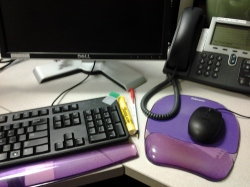


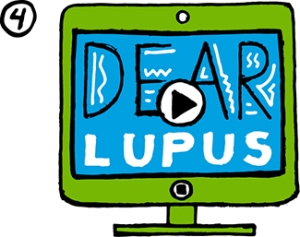

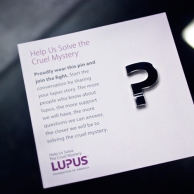



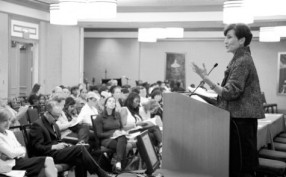













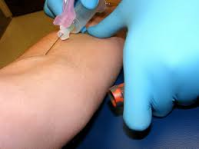


















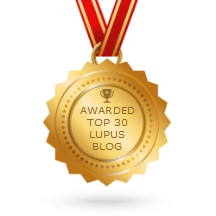

Recent Comments